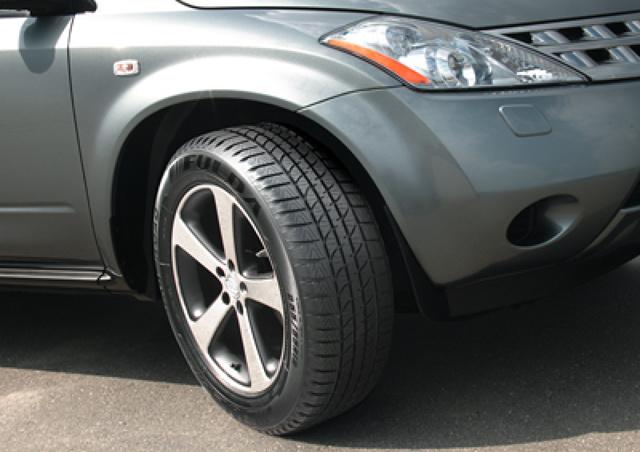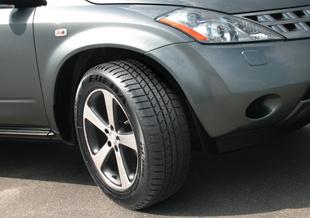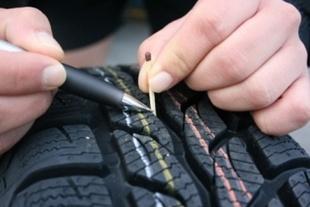
Is it time for new tires?
 Operating time, the number of kilometers traveled or the degree of tread wear - what influences the decision of the Poles to change tires to new ones? We present the results of a survey conducted among Internet users and a quick guide to current tire change signals.
Operating time, the number of kilometers traveled or the degree of tread wear - what influences the decision of the Poles to change tires to new ones? We present the results of a survey conducted among Internet users and a quick guide to current tire change signals.
Despite the fact that a set of new tires is a considerable expense, from time to time you have to make a decision to buy it. Old and worn tires  they will already provide the proper level of safety and driving comfort. When should you consider new tires? According to a survey conducted by OPONEO.PL SA, most Polish drivers know the answer to this question.
they will already provide the proper level of safety and driving comfort. When should you consider new tires? According to a survey conducted by OPONEO.PL SA, most Polish drivers know the answer to this question.
The main criterion when buying a new set of tires, according to drivers, is primarily the tread depth. As much as 79,8 percent. of those surveyed, this factor was indicated as a signal to change tires. The second most frequently cited criterion was tire life, at 16,7%. drivers change tires when the kit being used is simply too old. However, only 3,5 percent. of respondents is guided by the number of kilometers traveled on these tires. This is right?
How to know if a tire is worn out
As it turned out, most drivers surveyed correctly pay attention to tread depth. Because, in order to check if the tire you want to install for a given season, first of all, you need to check this parameter. If it turns out that the tread of our summer tires is less than 3 mm, then it's time to think about buying a new set. However, in the case of winter tire tread, the lower limit of tread depth is 4 mm.
“The minimum tread depth required by the Highway Code for drivers is 1,6 mm,” explains Wojciech Głowacki, Customer Service Manager at OPONEO.PL SA. at higher top speeds, a more restrictive tread wear of 3-4 mm is assumed. You have to remember that in addition to good brakes and lighting, tires are the backbone of safe driving,” he adds.
The second thing you should pay attention to is all the distortions and bumps that appear on the tires over time. If during inspection we notice swellings, swellings, delaminations or transverse cracks in the sidewalls or in the tread, we should contact the nearest vulcanization service to have a specialist assess the condition of our tire.
 What factors completely disqualify a tire? A minimum level of wear rate is necessarily achieved in several places around the circumference of the tire. These are also damages that prevent further operation, for example, in a removable tread, deformation or detection of a wire (the part of the tire on which it is attached to the rim), as well as stains and burns inside the tire. Also disqualifying for our tire will be any cuts and tears in the rubber on the sides of the tire, even superficial ones, which can damage the carcass threads of the tire.
What factors completely disqualify a tire? A minimum level of wear rate is necessarily achieved in several places around the circumference of the tire. These are also damages that prevent further operation, for example, in a removable tread, deformation or detection of a wire (the part of the tire on which it is attached to the rim), as well as stains and burns inside the tire. Also disqualifying for our tire will be any cuts and tears in the rubber on the sides of the tire, even superficial ones, which can damage the carcass threads of the tire.
Another criterion by which one can judge the condition of tires is simply their age. The life expectancy of a tire should not exceed 10 years from the date of manufacture, even if the tread depth has not yet reached the wear indicator level and the tire shows no obvious signs of wear such as cracks or delaminations. .
Although the regulation does not limit the life of tires to 10 years and after this time we can still legally drive them, it must be taken into account that this is associated with a decrease in safety. Over time, both the tire and the gas mixture lose their properties, which means that they no longer provide the same level of grip and braking as new.
When thinking about changing tires, it is also worth considering how many kilometers we have driven on old tires. With moderate driving, the tires should cover from 25 to 000 km without problems. However, if we have a dynamic driving style or often drive on rough terrain with bumps, our tires age faster.
Tire wear and safety
Tire wear has a significant impact on driving safety, i.e. grip and braking distance. A shallow tread is more likely to be a driving problem. This is especially important on wet surfaces, where tire wear can affect the phenomenon of hydroplaning, i.e. a situation in which the tread cannot drain water from under the tire, and a water wedge forms at the point of contact with the ground, which causes the car to lose traction. with the road and begins to "flow".
A worn tire is also a high probability of cracking or tearing off the tread, tearing the tire off the rim and other unpleasant events that may surprise us on the road. So if we do not want to expose ourselves and our car to such adventures, it is enough to regularly check the condition of the tires.